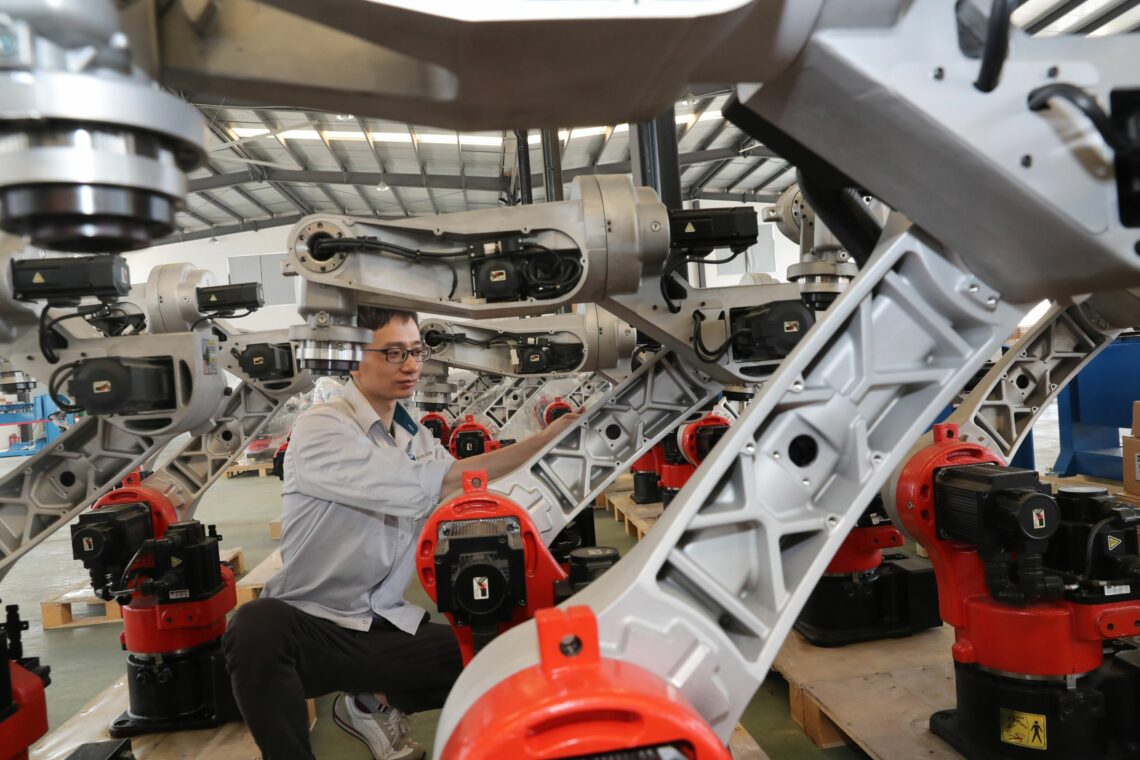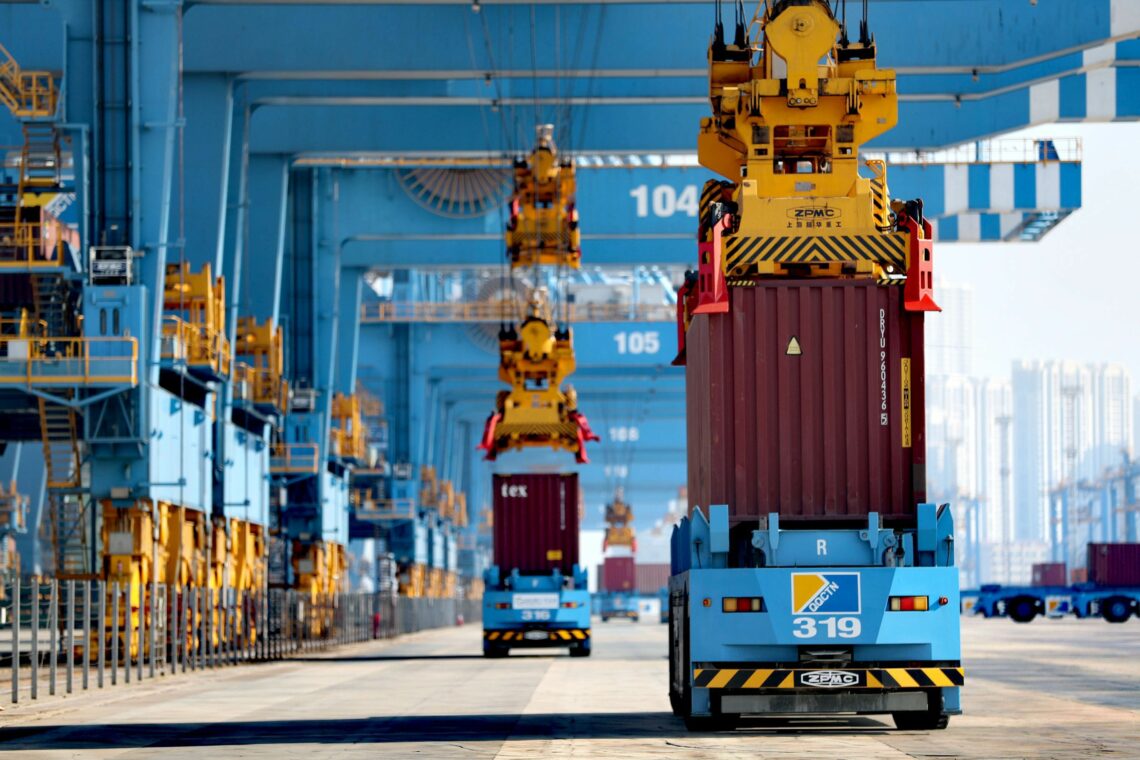Labor markets after Covid
The global economy is bouncing back from Covid-19, but forces in the labor markets will further polarize workers. Those that have the hard skills to work with high-tech machinery will benefit, while those who do not will be pushed further down the wage ladder.

In a nutshell
- Post-Covid investment will transform the labor market
- Trends toward robotics and automation will accelerate
- Unskilled workers will have to take lower-paying jobs
The world economy seems back on track. According to the International Monetary Fund, global growth should be about 6 percent in 2021 and 4.4 percent in 2022. While politicians claim credit for this happy result based on their support for generous monetary policies and enormous budget deficits, vaccines are the real reason for the upswing. Easy money and subsidies do not create wealth and are often an incentive to reduce production. In fact, it was the highly effective Covid-19 vaccines that have taken the pressure off government authorities, who now have no reason to restrain consumption and production, or engage in extraordinary public expenditure.
The IMF qualifies its projections with warnings that we are living in a period characterized by uncertainty and inequality. Yet, the picture is clear and confirms a well-known pattern. China is leading the current recovery (its growth rate will be above 8 percent in 2021 and close to 6 percent in 2022), the United States is doing well (6.4 percent in 2021 and 3.7 percent in 2022) and will reach its pre-pandemic gross domestic product (GDP) soon. Europe is doing more or less as expected (4.2 percent in 2021 and 4.4 percent in 2022).
Developing countries still lag: the vaccination campaigns are slower, and their economies are usually pulled by growth in the rest of the world. As a result, their recovery will likely gather speed only toward the end of this year.
Supply and demand bottlenecks
Despite the good news, things will not go back to business as usual for two reasons. One regards monetary policy and inflation: movements in the credit market (interest rates) and rising prices will have important consequences for public debt sustainability in many countries. Whatever policymakers’ response, we can bid goodbye to the past decade of no inflation, negative nominal interest rates and workable budget deficits. Another reason regards labor markets. This report focuses on this second aspect.
More and more intelligent machines will require skilled professionals to work with, program and repair them.
The pre-Covid trend was clear: more intelligent machines will require skilled professionals to work with, program and repair them. These workers will be needed both in capital-intensive industries (like manufacturing) and in labor-intensive sectors (like insurance and finance). On the other hand, unskilled people will lose their jobs and be forced to migrate toward lower-skill industries such as tourism, personal care and government bureaucracy. Their real wages will probably drop.
During the pandemic, most investors stayed put, and the capital-to-labor ratio dropped significantly in several advanced economies. As Covid-19 is brought under control, investments will pick up. They will concentrate on cutting-edge technology and set new standards in labor markets. The automation process will gain speed, and social tensions will rise. Some observers have rightly pointed out that there will be many bottlenecks that could slow down this trend. These challenges are not insurmountable –solutions will appear, but policymakers are likely to ignore them.
There are two types of bottlenecks. Supply bottlenecks relate to the scarcity of labor with an adequate technical background. Many young people have learned in recent years that interacting with an intelligent machine in a production process requires more technical knowledge than operating a smartphone or a laptop. Not enough people have adequate training in engineering, nor do they have a satisfactory mathematical and statistical background that would enable them to catch up and fill their technical gaps.
Though people may not need a five-year university degree to acquire the proper technical skills, an entire curriculum focused on social sciences may become problematic for millions of young workers looking for a good-paying job.

Demand bottlenecks happen when there are not enough potential employers to absorb sets of relatively weak applicants. The presence of weak applicants is not a new phenomenon, but in the past decades, they often went unnoticed because the public sector frequently absorbed them. Today, the public sector seems less inclined to hire. Instead, it tends to hand out unemployment subsidies or extraordinary handouts. These can be cut or fine-tuned more easily in times of tighter budgetary constraints and, more importantly, are a more effective way of acquiring votes in elections. They also destroy motivation while rewarding political expediency and demagoguery. Certainly, generous subsidies to the unemployed is an easy way of taking low-skill workers out of the labor market. But it is expensive and unfair to taxpayers.
Polarized labor market
The upshot is that labor markets will become increasingly polarized. The hard-knowledge workers will enjoy attractive occupations and rising incomes, while the others will compete for jobs, salaries and government subsidies that certainly do not justify 15 or more years of education. There will be, of course, success stories among those with a weak technical background, like lawyers, insightful entrepreneurs and proficient business consultants. Such people will be a minority.
These processes will intensify in the post-Covid years. There is no way to stop them. Proposals aimed at taxing various forms of technological progress, especially robots, do gain traction from time to time. In this light, recent efforts to introduce a global corporate tax of at least 15 percent is a first step toward creating a worldwide uniform fiscal system with the ultimate purpose of killing tax competition and regulating progress. If successful, these attempts will have ruinous effects.
If the new corporate tax morphs into a sales tax, consumers will end up paying the bill.
For example, if the tax cartel is porous, low-tax destinations will attract the most innovative companies. Suppose the new corporate tax morphs into a sales tax. In that case, consumers will end up paying the bill: the anti-capitalist rhetoric of fairness will evaporate, and the real purpose of these grand fiscal designs – raising more revenue to finance more public expenditure – will become apparent. The West will buy the robots it needs from China, possibly at tax-inflated prices. If governments impose countervailing duties to retaliate against allegedly unfair competition, trade flows will suffer, and more harm will be done.
As mentioned earlier, labor market polarization will lead to more inequality in income distribution. As such, inequality is neither good nor bad. A thriving economy is one where people are rewarded for what they do for others, not according to what a politician thinks about individuals’ worth. Yet, there is little doubt that politicians will seek to increase taxation on the rich and not-so-rich and pretend to try to address the problem of alleged unfairness of unequal income and wealth distribution. Once again, fighting inequality is a veil behind which authorities enforce heavier taxation for most taxpayers.
Scenarios
So, the automation process will accelerate, great opportunities will emerge, and labor market polarization will intensify. The green economy will not help the unskilled, though, since most green and clean-power jobs involve expertise, high-tech machinery and software.
In other words, automation will kill obsolete jobs. The new opportunities will only be available to those who have the hard skills or the ability to acquire them quickly. The young will pay a hefty price.
An obvious solution is reducing time spent at school, liberalizing the education system and cutting taxation and government expenditure. Regrettably, governments seem to be heading in the opposite direction.
The welfare state is expanding and providing more compensation to those who make the wrong choices and ignore what employers and buyers need. This tendency is particularly worrying in many European countries, where labor market regulation is pervasive. Desires to keep jobs outweigh the willingness to take chances and do what it takes to move to new industries with better prospects. Starting a new business can seem like an act of heroism rather than an entrepreneurial choice.







